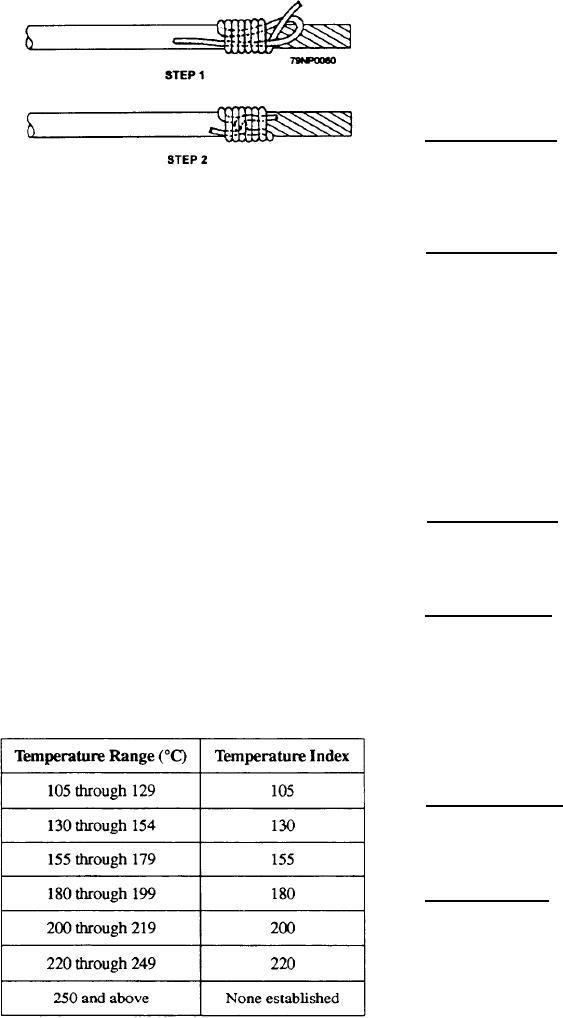
The purpose of assigning each material a definite
temperature index is to make it easier to compare
materials and to provide a single designation of
temperature capability for purposes of standardization.
Some of the classes of insulation are discussed in this
section.
Class O insulation. Class O insulation consists of
cotton, silk, paper, and similar organic materials that are
not impregnated or immersed in a liquid dielectric.
Class O insulation is seldom used by itself in electrical
Figure 2-13.--Serving conductor ends.
equipment.
Insulation
Class A insulation. Class A insulation consists of
the following:
Their are two purposes of insulation on electric
cables and equipment:
1. Cotton, paper, and similar organic materials
when they are impregnated or immersed in a
1. To isolate current-carrying conductors from
liquid dielectric
electrically conductive structural parts
2. Molded and laminated materials with cellulose
2. To insulate points of unequal potential on
filler, phenolic resins, and other resins of similar
conductors from each other.
properties
Normally, the conductivity of the insulation should be
3. Films and sheets of cellulose acetate and other
sufficient y low to result in negligible current flow
cellulose derivatives of similar properties
through or over the surface of the insulation.
4. Varnish (enamel), as applied to conductors.
Electrical insulating materials used in naval
Class B insulation. Class B insulation consists of
shipboard electrical equipment (including cables) are
mica, asbestos, fiber glass, and similar inorganic
classified according to their temperature indexes. The
materials in built-up form with organic binding
temperature index of a material is related to the
substances.
temperature at which the material will provide a
specified life as determined by test, or as estimated from
Class H insulation. Class H insulation consists the
service experience. To provide continuity with past
following:
procedures, the preferred temperature indexes given in
table 2-5 are used for insulating materials that, by test
1. Mica, asbestos, fiberglass, and similar inorganic
or experience, fall within the temperature ranges
materials in built-up form with binding
indicated.
substances composed of silicone compounds or
Table 2-5.--Temperature Indexes of Insulating Materials
materials with equivalent properties; and
2. Silicone compounds in the rubbery or resinous
forms, or materials with equivalent properties.
Class C insulation. Class C insulation consists
entirely of tics, glass, quartz, and similar inorganic
material. Class C materials, like class O, are seldom
used alone in electrical equipment.
Class E insulation. Class E insulations an extruded
silicone rubber dielectric used in reduced-diameter
electric cables in sizes 3, 4, and 9. Special care should
be exercised in handling the cables to avoid sharp bends
and kinks that can damage the silicone rubber insulation
on the old types that did not employ a nylon jacket over
each insulated conductor.
2-15

